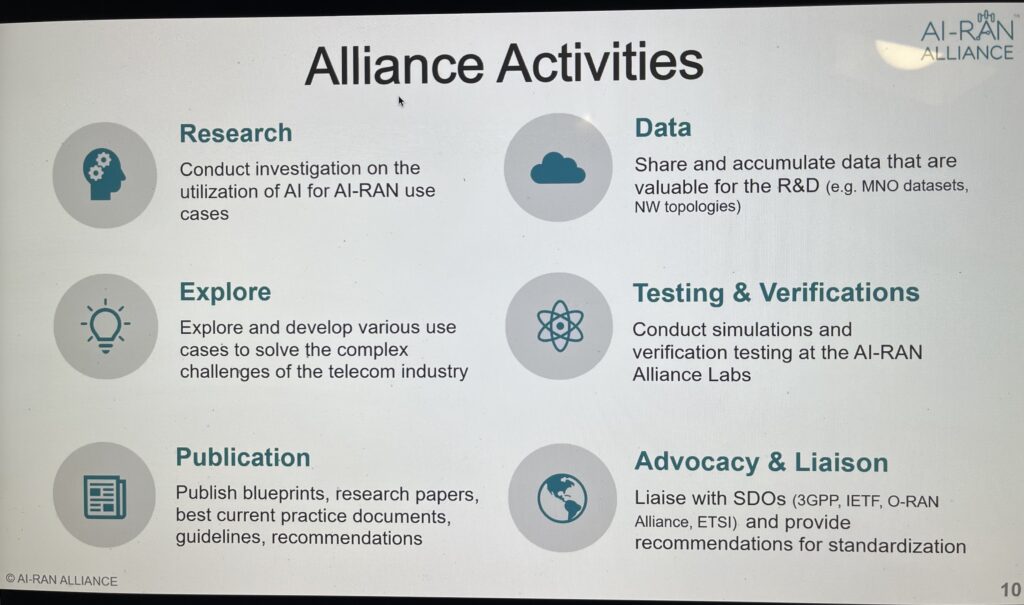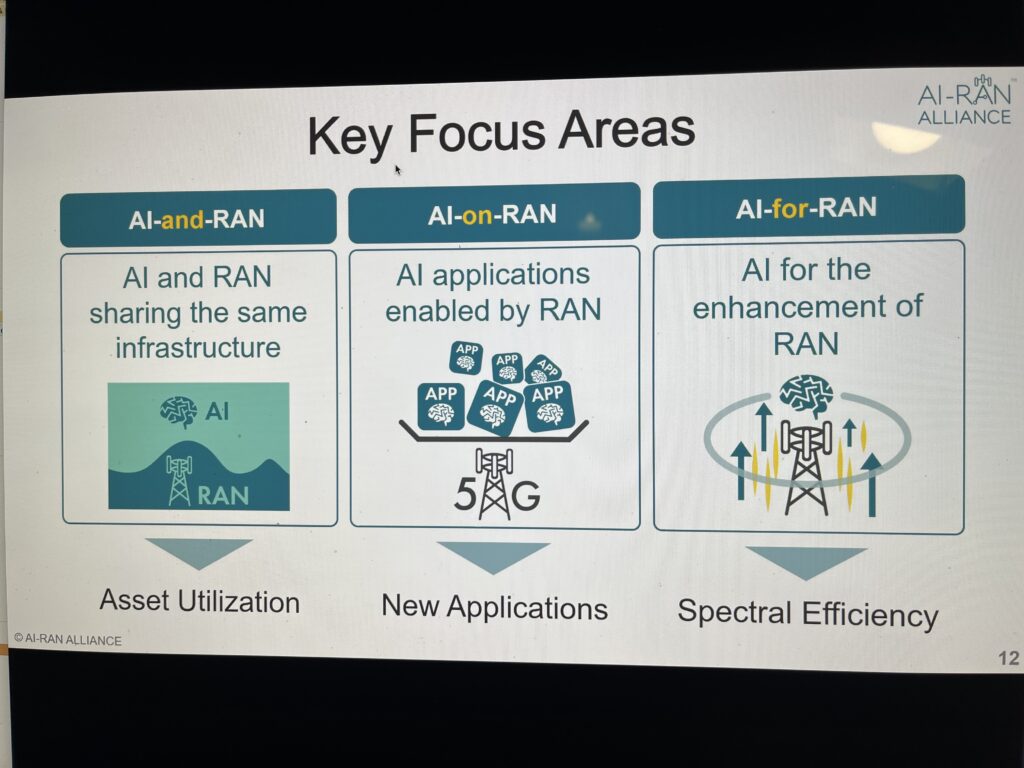Another MWC, another forum – it’s traditional. This one aims to spur R&D for AI in “the most underutilised infrastructure”
The AI-RAN Alliance, announced today, is “a new collaborative initiative aimed at integrating AI into cellular technology to…advance RAN technology and mobile networks”.
Founding members include AWS, Arm, DeepSig, Ericsson, Microsoft, Nokia, Northeastern University, NVIDIA, Samsung Electronics, SoftBank and T-Mobile USA. Their “mission” is to improve mobile network efficiency, reduce power consumption and retrofit infrastructure in preparation for “new economic opportunities for telecommunications companies with AI, facilitated by 5G and 6G”.
AI is not a new subject in telecoms, but the spectacular rise of GenAI has reset expectations. How inflated they are in remains to be seen. NVIDIA’s market cap has broken the $2 trillion barrier, boosted by the huge surge in demand for its chips to train large language models (LLMs) in the development of GenAI applications and its premium pricing.
NVIDIA’s pitch to telecoms is that its superchip, Grace Hopper, will be able to support such AI applications at the edge as well as run RAN software. It has thrown its huge weight behind this new AI-RAN Alliance. Grace Hopper was announced last August, named in honour of the American computer scientist, mathematician and US Navy Rear Admiral, Grace Brewster Hopper.
Aside from the many other issues – technical, power consumption and logistics for starters – to be addressed, at the moment cost alone looks prohibitive. Interestingly, fellow chipmaker Arm is demoing the AI-RAN Alliance at MWC.

Members are to focus on three main areas of research:
- AI for RAN – advancing RAN’s capabilities to improve spectral efficiency
- AI and RAN – integrating AI and RAN processes to use infrastructure better and generate AI-driven revenue opportunities
- AI on RAN – deploying AI services at the network edge, through RAN, to increase operational efficiency and offer new services to mobile users.

Network operators in the alliance will lead the testing and implementation of technologies arising from the collective research efforts of the alliance.
Ronnie Vasishta, Senior Vice President for Telecom at NVIDIA, told a pre-WMC press and analyst briefing, “ The RAN infrastructure today is perhaps one of the most underutilised infrastructures that there is. If you look at say the RAN requirements, by day RAN may be very, very highly utilised… two o’clock in the morning, for instance, the RAN infrastructure is very underutilised. So traditionally, you’ve had to build for maximum use, and overprovision the infrastructure.
“Now as a software-defined workload on infrastructure that can also run other workloads, such as AI, what we’re able to do is to have colocation of workloads with the high value of AI applications, really providing revenue opportunities that can augment or mitigate the sunk cost of the [RAN] infrastructure.”
He added, “Of course…RAN should always be available as required. That requires the provisioning opportunities and the AI ability…to provision AI and vRAN together, such that you can maintain that carrier grade resiliency and redundancy required for RAN.”
Duplicated effort?
Asked whether the proposed work wasn’t covered already by the many other alliances, Mohamed Awad, Senior Vice President and General Manager, Infrastructure Line of Business, Arm, said, “I don’t know that there is another Alliance… specifically focused on it in the way that we are. That is…not only harvesting the ability for AI to improve the performance, efficiency, TCO [total cost of ownership] of the infrastructure, but then also finding…exploring ways that you can…leverage that infrastructure for new and interesting applications.”



